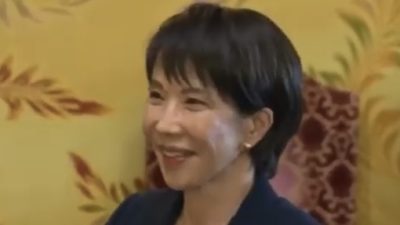Japan Politics: Komeito Leaves the Ruling Coalition (Takaichi Setback)
Kanako Mita, Noriko Watanabe, and Sawako Utsumi
Modern Tokyo Times

Recently, Sanae Takaichi defeated Shinjiro Koizumi — the privileged son of a former national leader — in the runoff election to lead the ruling Liberal Democratic Party (LDP). However, the sudden announcement by Komeito, the LDP’s junior coalition partner, that it is leaving the ruling coalition has dealt an immediate political setback.
Despite the LDP’s weakened position, Takaichi appeared poised to become Japan’s next prime minister by mid-October. Her rise, alongside Tokyo Metropolitan Governor Yuriko Koike, placed two women in prominent positions of political power — a significant moment in a country where sexism remains deeply ingrained in both corporate culture and broader society. Yet, the initial optimism surrounding Takaichi potentially becoming Japan’s first female leader has been overshadowed by Komeito’s departure, injecting further uncertainty into the nation’s political landscape.
Komeito claims its decision stems from the LDP’s inadequate response to corruption scandals and issues surrounding corporate funding. However, the timing of this move raises questions.
Why not announce such a decision before the recent LDP leadership contest — or even during the tenure of the previous LDP leader? If Komeito’s concerns are truly ideological, particularly regarding Takaichi’s nationalist stance, why didn’t the party break ranks under the leadership of former Prime Minister Shinzo Abe, who held similarly hardline views? Is this an implicit judgment that the LDP is now a sinking ship?
Tetsuo Saito, the leader of Komeito, chose to make this decision at a politically fragile moment for the LDP. While policy differences between the two parties have existed for decades — especially on defense and social issues — Komeito had consistently maintained the coalition for 26 years.
The leader of Komeito commented that the LDP had “failed to provide sufficient answers regarding political funding issues.”

Even under Fumio Kishida, whose leadership leaned toward militarization and symbolic nationalism despite a more moderate public image, Komeito remained aligned. This raises the possibility that the true reasons for the split remain obscured beneath the surface of polite political discourse.
Takaichi expressed disappointment to the media, stating that Saito had “one-sidedly announced the decision to leave the coalition.”
She also noted that she had sought a resolution in coordination with LDP Secretary-General Shunichi Suzuki. However, by the time discussions began, Komeito’s decision appeared final — a move that seems inconsistent with the party’s past willingness to overlook similar concerns under other LDP leaders.
Takaichi said, “We’ve been together for 26 years and it was extremely disappointing, but this is how we ended up.”
AP news reports, “The ruling coalition had already lost its majorities in both houses of parliament. The lower house is due to vote on a new prime minister later this month.”
Kazuko Yoshikawa, a nursery teacher, shared her skepticism: “I don’t trust any of the political parties. But I can’t help wondering if there’s a sexist angle to Komeito’s decision. The new LDP leader isn’t much different from past ones — they’ve all tolerated the Moonies, indulged in petty nationalism, and failed to respond properly to recent scandals. So why break the alliance now? Maybe it really does come down to sexism.”
Accordingly, Japan finds itself navigating fresh political headwinds, as the ruling LDP shows signs of weakening.

Modern Tokyo News is part of the Modern Tokyo Times group
http://moderntokyotimes.com Modern Tokyo Times – International News and Japan News
http://sawakoart.com – Sawako Utsumi and Modern Tokyo Times artist
https://moderntokyonews.com Modern Tokyo News – Tokyo News and International News
PLEASE JOIN ON TWITTER
https://twitter.com/MTT_News Modern Tokyo Times
PLEASE JOIN ON FACEBOOK